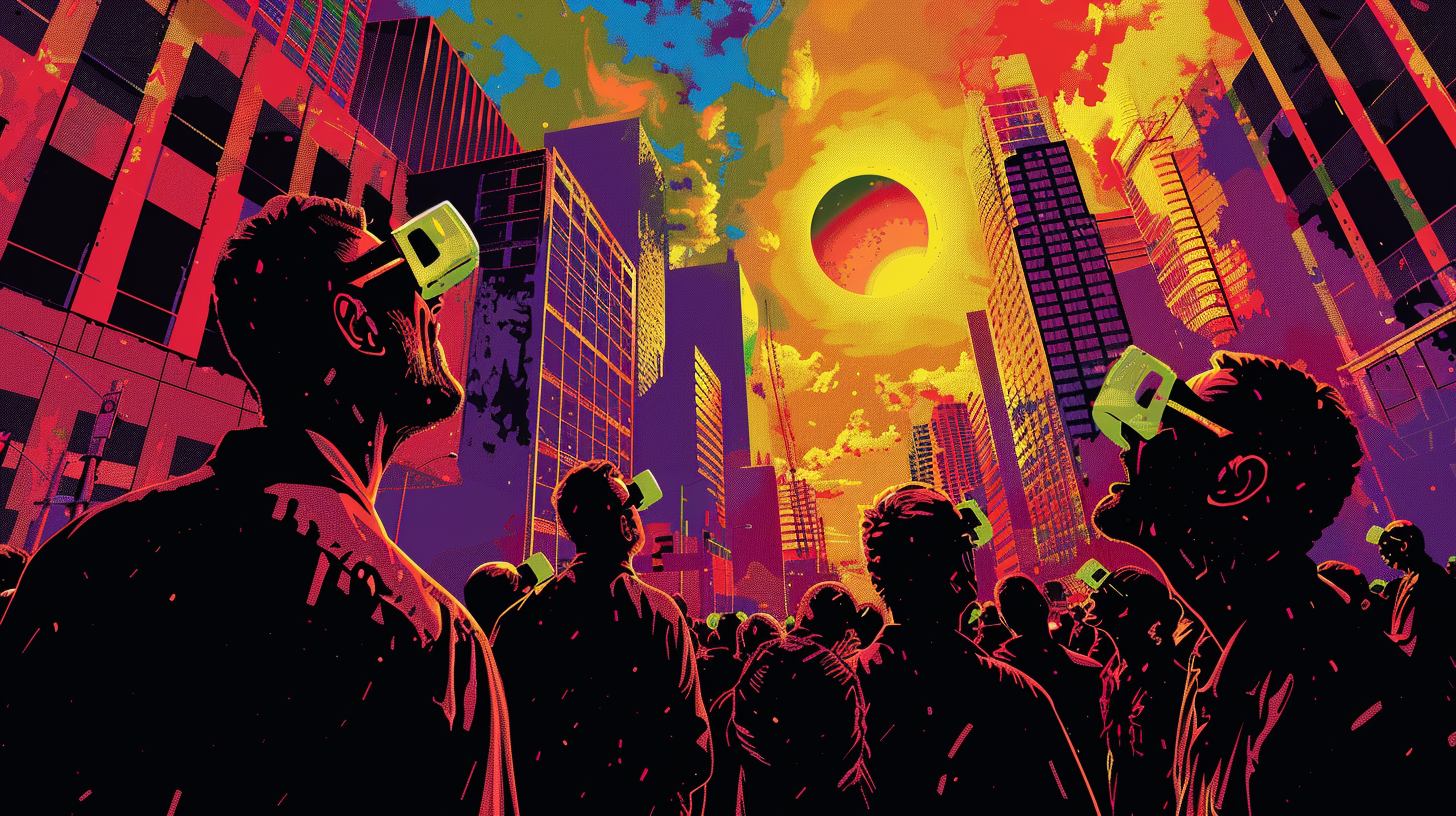The Risks of Improper Viewing
Every time a solar eclipse graces our skies, it captivates us with its beauty. But there’s a hidden danger for those who watch without proper precautions: retinal damage.
This damage, known as solar retinopathy, occurs when the intense light from the sun burns the retina, the part of the eye responsible for detecting light. Following the 2017 total solar eclipse, the journal JAMA Ophthalmology documented instances of individuals suffering from vision issues due to viewing the eclipse without adequate protection.
The American Academy of Ophthalmology (AAO) warns that direct exposure to the sun during an eclipse can lead to symptoms like dark spots in one’s vision and eye pain, signs of potential long-term damage
Fun Fact #1-Totality Awesome: During a total solar eclipse, the temperature can drop by 10 degrees Fahrenheit or more, creating a sudden and eerie midday twilight

Solar Eclipse Viewing Guide
As we anticipate the solar eclipse at 12:43 PM today, it’s crucial to prioritize eye safety.
1. Obtain Eclipse Glasses: Ensure you have eclipse glasses that meet the ISO 12312-2 international safety standard. These are specifically designed to protect your eyes from harmful solar rays.
2. Use a Pinhole Projector: If you don’t have eclipse glasses, make a pinhole projector. This method allows you to view the eclipse indirectly by projecting the sun’s image onto a flat surface.
3. Avoid Regular Sunglasses: Do not use standard sunglasses to view the eclipse. They do not provide adequate protection against the sun’s rays.
4. Caution with Optical Devices: Never look at the sun through cameras, telescopes, or binoculars without the proper solar filters. These devices can intensify the sun’s rays, increasing the risk of eye damage.
By following these steps, you can safely enjoy the beauty of today’s solar eclipse without endangering your vision.
Fun Fact #2-Rare Shadows: Solar eclipses can produce rare and fascinating shadow phenomena, such as shadow bands (thin wavy lines of alternating light and dark) and the diamond ring effect, a flash of light seen when the moon covers the sun completely except for a bright spot on the edge.

Trivia time!
After three wrong guesses, it will give you the correct answer.




